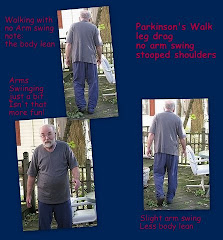Reprogrammed Skin Cells for Parkinson's
There are other methods for developing effective treatments and possibly cures for diseases through the adaptation of non-embryonic stem cells which are induced to have the pluripotent capabilities. There appears to be potential if these cells can live up to their promise.
Induced pluripotent cells
Non-embryonic stem cells induced/stimulated to
become pluripotent (iPS)
Embryonic stem cells
Already pluripotent (ESC) capable of being any cell
hESC
Human embryonic stem cells
hiPSC
Human induced pluripotent cells
Pluripotent
having the capability to be any cell
Gene expression
a measure of which genes the cell uses and how much of the
cell uses those genes
Genetic recombination
a strand of genetic material (DNA or sometimes RNA)
is broken and joined to a different DNA molecule
Botanists have been grafting for centuries but this is nano
micro-scale and complicated
Cre recombinase
Enzyme which catalyzes genetic recombination
Transgene
Genetic material transferredfrom one organism to another;
any DNA sequence introduced into an organism.
Factor-free
without being introduced via a virus factor
As you already know, researchers in Cambridge MA have been able to use skin cells which were induced into pluripotency to become dopamine-producing neuron cells. Unlike previous research, these iPS did not insert cancer producing genes into the DNA because that reprogramming was removed allowing the cells to maintain an ESC-like status.
The problem in the past has been that the reprogrammed cells had the potential to cause cancer, creating an out of the frying pan and into the fire situation. In the new process: the skin cells of a Parkinson's patient are reprogrammed to be iPS cells. And then reprogrammed again so that the potentially cancer-causing program was removed. At this point the human induced pluripotent cells (hiPS) are very similar to human embryonic stem cells (hESC)
In the past researchers were not sure that removing the reprogramming from these human cells would allow the cell to maintain a stable iPS state so that it could multiply. Now they are. This step opens the door...
Links:
http://www.cell.com/abstract/S0092-8674(09)00151-2
http://esciencenews.com/articles/2009/03/05/breakthrough.produces.parkinsons.patient.specific.stem.cells.free.harmful.reprogramming.genes
The Scientists:
Whitehead Institute for Biomedical Research, Cambridge, Mass: Frank Soldner, Dirk Hockemeyer, Caroline Beard, George W Bell, Elizabeth G Cook, Qing Gao, Miasam Mitalippova, Rudolph Jaenisch
Dept of Biology MIT, Cambridge, Mass: Rudolph Jaenisch
Udall Parkinson Disease Research Center of Excellence, Center for Neuroredegeneration Research, McLean Hospital/Harvard Medical School, Cambridge, Mass: Gunnar Hargus, Alexandra Blak, Oliver Cooper, Ole Isacson
Thursday, March 19, 2009
Subscribe to:
Post Comments (Atom)














No comments:
Post a Comment
Welcome to Parkinsons Focus Today.
We are delighted to hear from you by comment here
or through email as found in Contact Us.
Please do not include email addresses if leaving a comment online.
Email addresses are used only for email responses.
Spammers take note: your messages will not be published. The comments section is for an exchange of ideas, not for backlinks.